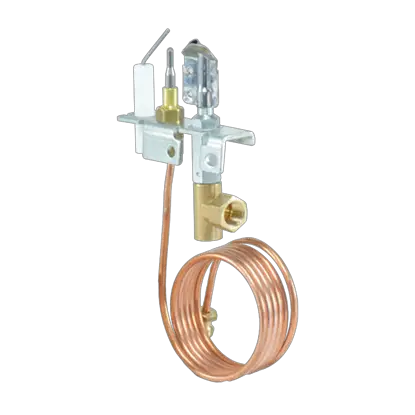Externally equalized TXV is a term that might seem complicated at first glance. However, with the right guidance, it becomes straightforward. This article will lead you through every detail you need to understand this crucial component and its significance in refrigeration and air conditioning systems.

Table of Contents
What is an Externally Equalized TXV?
The Externally Equalized Thermostatic Expansion Valve (TXV) is an essential component in many refrigeration and air conditioning systems. But what exactly is it?
Essentially, it’s a device designed to control the amount of refrigerant flowing into the evaporator. It works by responding to changes in the evaporator pressure and the temperature of the refrigerant.
The “externally equalized” part refers to the mechanism of the valve which is connected to an external pressure pickup tube. This tube senses the pressure at the outlet of the evaporator, allowing for more precise control when there is a substantial pressure drop across the evaporator coil.
Understanding this aspect is key as it brings about a nuanced control in the system, facilitating optimized performance by accounting for pressure variations more accurately than its internally equalized counterpart.
Importance of External Equalization
External equalization is vital in systems where there is a substantial pressure drop across the evaporator. This setup ensures that the TXV is referencing the correct pressure, which is necessary for it to control the refrigerant flow accurately.
By employing an externally equalized TXV, you mitigate the risk of poor performance due to fluctuations and discrepancies in pressure readings.
Essentially, it helps in achieving the desired temperature control and enhances the overall efficiency of the system. This is achieved by providing a more accurate response to the load conditions at the evaporator outlet, promoting an optimal environment for the refrigerant to absorb heat.
Installation Process for Externally Equalized TXV
Installing an externally equalized TXV is a critical task and demands attention to detail to ensure the system functions efficiently. It is typically carried out by trained technicians. Here’s a more detailed breakdown of the process:
Step 1: Begin by shutting down the refrigeration system to create a safe work environment.
Step 2: Identify the precise location for the TXV, which is at the inlet of the evaporator.
Step 3: Secure the TXV using appropriate fixtures. It’s vital to use the correct fittings to prevent any future leakages or operational issues.
Step 4: The external equalizer line needs to be connected to the suction line at the outlet of the evaporator to gauge the correct pressure for accurate functionality.
Step 5: After installation, initiate a system pressure test to check for leaks and ensure the TXV is installed correctly.
It’s essential to note that before turning the system back on, all the tools and materials used for the installation should be cleared from the workspace to prevent any accidents.
Check out these other articles…
TXV HVAC: Your Comprehensive Guide
Bad TXV Valve Symptoms: Detecting & Resolving Early Signs
What is TXV Valve? Comprehensive 411 Guide
How Does a TXV Work? Your Easy 411 Guide
When is a TXV Valve Needed: Comprehensive 411 Guide
Function of Thermostatic Expansion Valve in Refrigeration System
Troubleshooting Common Issues
Despite a perfect installation, you might face issues over time. Knowing how to troubleshoot common problems can save time and resources. Here is a deeper insight into troubleshooting:
Blocked External Equalizer: It can result from dirt accumulation. It’s advisable to clean it periodically to prevent blockages.
Improperly Adjusted Superheat Setting: If the superheat setting is not accurately adjusted, it can cause issues in the functioning of the system. Always refer to the manufacturer’s guidelines to reset it to the optimal level.
Dirt and Debris in the TXV: Periodical cleaning and checking the valve for dirt and debris can prevent many issues.
Maintenance and Care
To ensure the long-term functionality of your externally equalized TXV, regular maintenance is crucial. Here we offer a detailed guide to maintenance and care:
Regular Inspections: Regular checks can help in identifying issues at an early stage. Ensure to inspect the connections, fittings, and the general state of the TXV periodically.
Keeping Connections Tight: Connections should always be tight to prevent leakages which can diminish the efficiency of the system.
Calibration: Over time, the TXV might need recalibration to maintain its functionality. Always refer to the manufacturer’s guidelines for the precise calibration process.